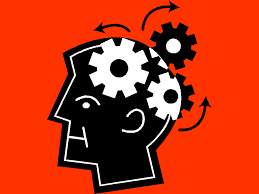Have you ever felt like your brain was being run by a hamster on a wheel…rutted thoughts circling around and around as your mind continues to spin? This is normal at times but if thinking becomes too rutted, it might be an indication of obsessive thinking. Obsessive thoughts are different than our normal thoughts as they feel like they are out of control and our minds see m fixated on them. When these thoughts become intrusive, and potentially, distressing, it is time to seek help.
m fixated on them. When these thoughts become intrusive, and potentially, distressing, it is time to seek help.
‘How do I turn my mind off?’ Firstly, why does a mind get stuck in the ‘on’ position? There are several reasons why your mind might feel like it has become rutted. Here are five reasons:
- One common reason is being overwhelmed. When we have a lot going on we can get stuck in cyclical thinking.
- Another reason is underlying anxiety. If a person has generalized anxiety that seems to come and go for no apparent reason or have a clear trigger, anxiety can cause the thoughts to loop.
- Jumping ahead and reading into things can create a rutted thought pattern. “But what if…”
- Being overly tired. A tired brain can get more easily stuck on an anxious thought.
- Facing a lot of unknowns. Most people like to know what is going to happen and can become fixated on trying to make an ‘unknown’ become known.
One helpful way to turn your mind off, especially when trying to go to sleep, is with a skill called “Self-soothe with the Senses.” In this scenario, we want to bump the mind out of it’s thinking rut and into the sensory side of the brain. We can do this by simply halting our thought process — ‘I don’t want to think about this anymore, I am going to focus on everything that I see/hear/touch/smell or taste. [Proviso: if it is night time or dark, don’t use the ‘hearing’ one and if you have food issues, don’t use taste].
To use the tactile/touch sense, direct your thinking like this: “I am no longer thinking about ______, I’m paying attention to everything I touch.” For the touch receptors on my fingers to relay that information, it has to go into the sensory side of the brain. If the brain jumps back into thinking (which it will do initially as you learn this  skill) simply re-direct it back to ‘No, I’m paying attention to everything I touch, what does that feel like?’ If you are alone, say it out loud so you are also engaging another one of your senses. After 5-10 minutes of using the self-soothe skill, you will typically notice a drop in the level of distress that you have been feeling. If you are wanting more relief/distraction just choose a different sense to focus on, e.g. notice what you see. The descriptions need to be specific and detailed…”I see a cherry wood desk with black knobs and a large leather chair on rollers…” In this scenario, the brain is noticing everything it sees by directing the visual receptors to pass information along to the sensory side of the brain.
skill) simply re-direct it back to ‘No, I’m paying attention to everything I touch, what does that feel like?’ If you are alone, say it out loud so you are also engaging another one of your senses. After 5-10 minutes of using the self-soothe skill, you will typically notice a drop in the level of distress that you have been feeling. If you are wanting more relief/distraction just choose a different sense to focus on, e.g. notice what you see. The descriptions need to be specific and detailed…”I see a cherry wood desk with black knobs and a large leather chair on rollers…” In this scenario, the brain is noticing everything it sees by directing the visual receptors to pass information along to the sensory side of the brain.
As the brain is directed out of the rutted thinking loop you become less distressed, and more able to shift your attention to doing something more helpful or effective. When your distress is at a 9/10, reducing that distress may be the most effective first step. By using ‘self soothe with the senses,’ the distress can drop to a 6-7 and then a person is able to make a less emotionally charged decision and not a knee-jerk reaction.  Intervening in the rutted thinking cycle is somewhat like poking a hockey stick into a bicycle wheel that is turning quickly. The cycle stops NOW! That is what we want to do with those rutted thought patterns, break them/stop them, calm ourselves down/self-soothe with the senses and re-direct or distract ourselves so that we think about the things we want to think about.
Intervening in the rutted thinking cycle is somewhat like poking a hockey stick into a bicycle wheel that is turning quickly. The cycle stops NOW! That is what we want to do with those rutted thought patterns, break them/stop them, calm ourselves down/self-soothe with the senses and re-direct or distract ourselves so that we think about the things we want to think about.





